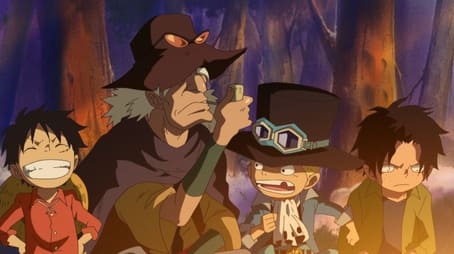
Sorry, we have not watched this yet.

Luffy and his friends vow to defeat the giant tiger that’s been stealing their food, Ace gets angry when his father’s identity is revealed, and Sabo’s parents hire pirates to track down their son!
Sorry, we have not watched this yet.